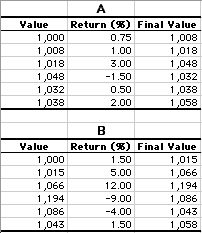The assignee has a lien on the car and can reclaim if you do website not pay. Co-signer A co-signer is a personsuch as a moms and dad, close relative, or friendwho promises to pay back the loan if you do not. This can be an advantage both to you and your lender. A co-signer takes complete obligation to pay back the loan. Having a co-signer on your loan provides your lender additional guarantee that the loan will be paid back. If you do not repay your loan, your co-signer will be liable for repayment even if the co-signer never drove your vehicle. If you've been asked to co-sign a loan, you ought to think about how it will affect your financial resources. In some states, the law permits the creditor to reclaim your vehicle without going to court. To learn more, including definitions of typical terms utilized when financing or leasing a cars and truck, read "Comprehending Automobile Financing," collectively prepared by the American Financial Solutions Association Education Foundation, the National Car Dealers Association, and the FTC. To order print copies of "Comprehending Automobile Financing," call the AFSA Education Foundation: (888) 400-7577.
A finance charge is a cost troubled a customer for acquiring credit. Finance charges consist of interest on debt balances and any extra costs imposed by the credit-issuing entity. Below, you'll discover common examples of financing charges that consumers face, and some suggestions for reducing the impact of these costs. A finance charge is any expense a consumer encounters in the process of acquiring credit and repaying debt. Financing charges generally featured any type of credit, whether it's a credit card, an organization loan, or a mortgage. Any quantity you pay beyond the amount you obtained is a financing charge.
One of the advantages of having a charge card is that you can obtain cash without needing to pay off your balance in complete on a monthly basis. Nevertheless, taking your time to repay your financial obligation comes at a cost. Your issuer will charge interest on any balance not paid off by the end of the month. That interest expense is a financing charge. If you miss out on a minimum payment deadline that falls beyond a grace period for your charge card, you might be charged a late payment charge, which is another example of a finance charge. Financing debt is huge organization in the U.S.


3 trillion. That's a 1. 1% increase since the fourth quarter of 2019, when home financial obligation was currently 26. 8% higher than it remained in 2013. Many of that debt ruined vacation (if not all of it) will feature financing charges such as interest charges and loan processing fees. Finance charges are calculated each billing cycle based upon the current prime rate. As of July 15, 2020, the Wall Street Journal determined the prime rate to be 3. 25%. This rate fluctuates in response to market conditions and Federal Reserve policy, so your potential finance charge might differ monthly (How long can you finance a camper). If you have a fixed-rate loan, the finance charge is less likely to vary, though it might still change based on aspects such as your payment history and timeliness.
Some Of What Does Leverage Mean In Finance
Charge card providers might determine finance charges utilizing your everyday balance, an average of your everyday balance, the balance at the beginning or end of the month, or your balance after payments have actually been used. Your charge card arrangement may likewise include a minimum financing charge that's used anytime your balance undergoes a fee. For example, your credit card terms might consist of a $1 minimum financing charge, so if a billing cycle's charges are $0. 65, that'll be rounded up to $1. You can reduce the quantity of interest you pay by minimizing your balance, requesting a lower interest rate, or moving your balance to a credit card with a lower rates of interest.
Financing charges can be noted in numerous locations on your regular monthly credit card billing statement. On the very first page of your billing statement, you'll see an account summary noting your balance, payments, credits, purchases, and any interest charges. In the breakout of how to get rid of time share transactions made on your account during the billing cycle, you'll see a line item for your finance charge and the date the finance charge was examined. In a separate section that breaks down your interest charges, you'll see a list of your financing charges by the kind of balances you're carrying. For example, if you have a purchase balance and a transfer balance, you'll see details of the financing charges for each.
For home loans, monthly payments are separated into principal and interest payments, in addition to additional expenses like real estate tax. In this case, the "primary" portion of payments would not certify as a financing chargeit simply goes toward minimizing your financial obligation balance. The interest payments, on the other hand, are a finance charge. Making your minimum credit card payment is usually sufficient to cover your finance charge plus a small portion of the balance. However, if you're only paying the minimum payment, your balance won't reduce by that muchit takes the bulk of a monthly payment just to cover interest charges. Since your balance isn't reducing significantly, you'll deal with another interest charge throughout the next billing cycle.
For those with substantial debt, the minimum payment might not cover the month's finance charge. In this case, paying the minimum will lead to a bigger balance. Decreasing financial obligation will require payments beyond the minimum. A finance charge is an expense troubled a customer who gets credit. Financing charges include interest charges, late fees, loan processing fees, or any other cost that goes beyond repaying the quantity borrowed. For numerous types of credit, the financing charge varies as market conditions and prime rates change.